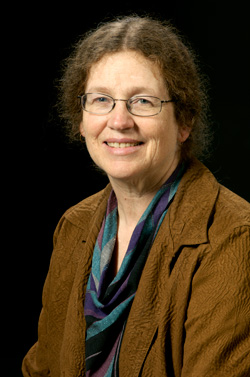
Dengler’s team will pinpoint factors that reduced or exacerbated physical impacts in south-central Chile, evaluate that nation’s pre-event preparedness and identify the barriers that emerged to evacuation.
The February 27 magnitude 8.8 earthquake was the fifth-largest ever recorded and the first mega-thrust earthquake to impact an urbanized region with a built environment, comparable to cities in Japan, the Pacific Northwest of North America and other developed regions of the Pacific basin, Dengler said. “It is particularly important to areas like Humboldt County, located atop the Cascadia subduction zone. Understanding what happened in Chile will help to prepare the Pacific Northwest for a similar-sized earthquake here.”
Accompanying Dengler will be Troy Nicolini, Warning Coordination Meteorologist of the Eureka National Weather Service Forecast Office; HSU alum Sebastian Araya (Geography ‘02); and HSU alum Nicholas Graehl (Geology ‘09), currently enrolled in the university’s Environmental Systems master’s program. The group will be joined in Santiago, Chile, by journalist Francisco Luna.
Dengler’s team, funded by private donations, will work under the auspices of the “Learning from Earthquakes Program” of the Earthquake Engineering Research Institute and UNESCO's International Tsunami Survey Team protocol.
More than 40 international and Chilean earthquake and tsunami researchers have been working in Chile or are planning visits in the next month to document the impacts of the ground shaking and resulting tsunami.
Dengler has participated in five previous International Tsunami Survey Teams (1998 Papua New Guinea, 2001 Southern Peru, 2005 Indonesia, 2006 Crescent City, 2009 Samoa) and numerous North Coast earthquake studies. She was the lead author of the recently released booklet "Living on Shaky Ground: How to Survive Earthquakes and Tsunamis in Northern California," available online at www.humboldt.edu/shakyground.
Nicolini is responsible for Weather Service outreach programs in Humboldt, Del Norte and Mendocino Counties and has coordinated the three Live Code tsunami communications tests. He oversees the TsunamiReady recognition program in Northern California and is co-chair of the Redwood Coast Tsunami Work Group.
Araya, a native of Chile, was the first undergraduate to participate in an International Tsunami Survey Team when he accompanied Dengler to Peru in 2001. He also led a Japanese tsunami team in 2002 researching tsunami mitigation systems in south-central Chile and was part of a tsunami reconnaissance effort to the Aysen area of southernmost Chile in 2007. An expert in geospatial analysis, Araya was HSU's Man of the Year 2001-2002.
Graehl was part of a number of tsunami-related projects while an undergrad, including staffing the Earthquake-Tsunami Room at the Humboldt County Fair (2006-2008), conducting a study of tsunami evacuation times on the Samoa Peninsula and completing a senior thesis project on tsunami deposits in the Crescent City vicinity. He is currently researching paleo-tsunami deposits in southern Oregon for his master’s project.
Dengler’s team will post field reports (Internet connections permitting) on the Blog site at www.humboldt.edu/rctwg.